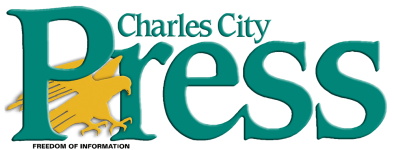State tests show where Charles City schools can focus efforts to improve proficiency
By Travis Fischer, tkfischer@charlescitypress.com
The Charles City Community School District has new information about its academic strengths and weaknesses.
At the regular School Board meeting on Monday, Sept. 25, Director of Academic Services Dr. Jennifer Schilling presented the board with the results of last year’s Iowa Statewide Assessment of Student Progress (ISASP) tests.

Taken at the end of the last school year, the state-mandated tests gauge the percentage of students deemed proficient in English and math from grades 3-11 and in science for grades 5, 8, and 10. By examining the results from year-to-year, the district is able to identify areas where programs are working and areas that need more attention.
“There are things in each grade level we need to focus on,” said Schilling in a follow-up interview.
In math, last year’s students saw marked improvement nearly across the board, with most grades demonstrating a higher percentage of proficiency by five percentage points to as much as 22 percentage points.
Two grades surpassed the state average, with last year’s sixth grade class reaching 72% proficiency, a percentage point above the state average and a 20 point improvement from last year when the members of that class were fifth graders.
The eighth grade also saw a substantial improvement in proficiency. At 76% proficiency, last year’s eighth grade saw a 22-point improvement from when they were seventh graders, beating the state average by 4 percentage points.
At the same time, last year’s fifth and ninth grade classes saw a decline in their math proficiency rates, which Schilling says is not uncommon as those are grades where students can struggle to adjust to new building environments and class structures.
Statewide, ninth grade math proficiency was lower than eighth and tenth grade averages.
While positive improvement in math was celebrated, proficiency rates in English demonstrated areas where the district is planning on corrective measures.
At the elementary and middle school levels, classes saw modest to substantial improvements going from 2022 to 2023, with increases in proficiency of one to nine percentage points and the sixth and seventh grade classes exceeding the state average.
However, at the high school, grades 9-11 all saw some level of decline from the previous year.
As a result, Schilling said she is focusing on a “vertical alignment” in the high school curriculum, bringing teachers at every grade level together to make sure that each grade of coursework is building off concepts students have worked on in the previous year.
“That has not happened in quite a few years,” said Schilling.
The school is also encouraging more collaboration between teachers through professional learning communities, giving teachers time and opportunity to come together and coordinate with each other.
“It’s moving away from that isolation,” said Schilling.
While the district isn’t developing an entirely new curriculum yet – though pilot programs for new English curriculum are planned to start later this year – it is hoped that the coordinated alignment of coursework will better ensure students are receiving material suitable for their grade level and that what they learn in one year can be expanded on in the next.
As curriculum director, a new position for the district, Schilling said she is using the ISASP as a resource to help shape the school’s curriculum, though she notes that it isn’t the only metric the school is using to improve outcomes.
“It’s one piece of data that districts focus on, but there are a lot of things that go into education,” said Schilling. “We’re moving in the right direction, but it is a process and it’s going to take some time.”









Social Share